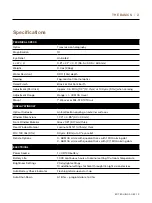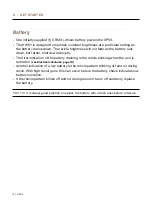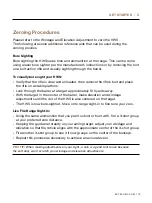
THE BASICS / 2
7
/ XPS3
EOTECHINC.COM /
The HWS offers extremely fast target acquisition in Close-Quarters Battle (CQB)
using the large ring, and aiming precision in longer range engagements (using the
MOA Dot) without obscuring the target
Another advantage of the HWS is the full field of view which allows the operator
better situational awareness The HWS employs a true heads-up display (HUD)
window that eliminates blind spots and constricted or tunnel vision associated with
scope sights Controls are inset into the HWS housing with no protruding knobs,
battery compartments, or rings obscuring the target Utilizing natural binocular vision
is an advantage of this sighting system, as well as additional threat identification
through increased operator situational awareness and peripheral vision
The XPS3 can operate in tandem with Generation I – III+ night vision intensifier
tubes Operators can see the holographic reticle image with helmet mounted or
weapon mounted night vision devices The HWS is a passive system and emits no
signature from frontal or from a peripheral aspect While in the NV mode, the sight is
undetectable by opposing force night vision equipment The HWS can be positioned
behind night vision systems without any “bloom” on the target area
The primary use of the HWS is for the M4A1 carbine and CQBR in Close-Quarters
Battle The HWS is not however, limited to carbines The HWS can also be used on
medium caliber machine guns, grenade launchers, bolt guns, crossbows, MSR and
similar platforms, and less than lethal projectile launchers The sight provides a 1X
(no magnification) sight picture and is not designed as a long range sight system;
however, it can be used as effectively as iron sights on targets to 300 meters
The advantage of the HWS is that it provides the operator superior shooting
performance, rapid reticle-on-target acquisition, full field of view and accurate shot
placement The HWS can be naturally deployed by all levels of users, from novice to
the most highly trained operator




























